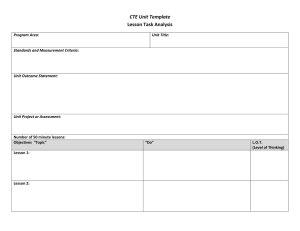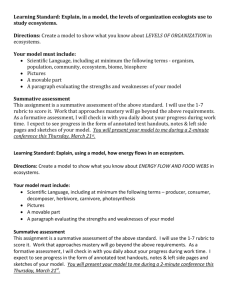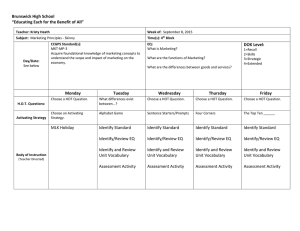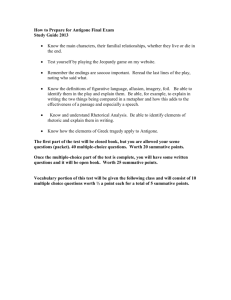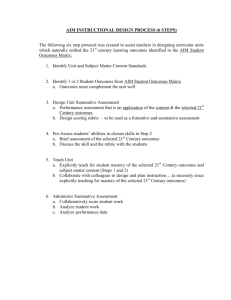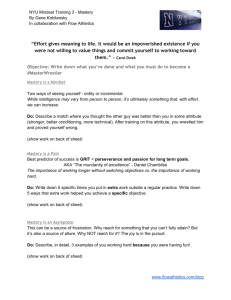The DID Designer
advertisement
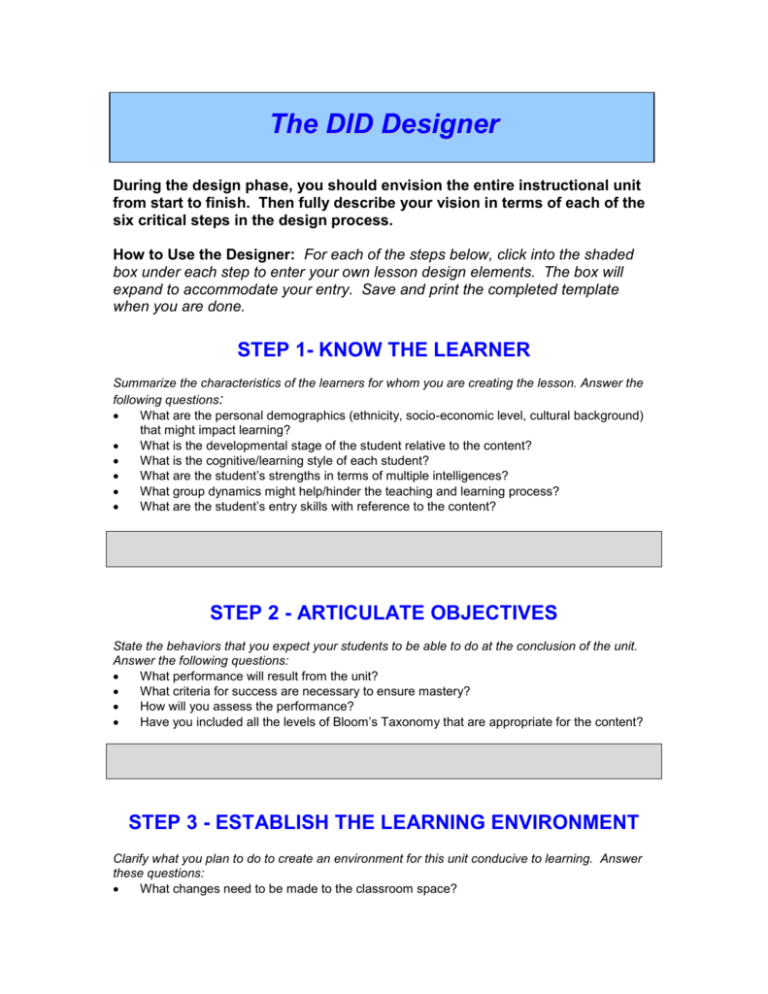
The DID Designer During the design phase, you should envision the entire instructional unit from start to finish. Then fully describe your vision in terms of each of the six critical steps in the design process. How to Use the Designer: For each of the steps below, click into the shaded box under each step to enter your own lesson design elements. The box will expand to accommodate your entry. Save and print the completed template when you are done. STEP 1- KNOW THE LEARNER Summarize the characteristics of the learners for whom you are creating the lesson. Answer the following questions: What are the personal demographics (ethnicity, socio-economic level, cultural background) that might impact learning? What is the developmental stage of the student relative to the content? What is the cognitive/learning style of each student? What are the student’s strengths in terms of multiple intelligences? What group dynamics might help/hinder the teaching and learning process? What are the student’s entry skills with reference to the content? STEP 2 - ARTICULATE OBJECTIVES State the behaviors that you expect your students to be able to do at the conclusion of the unit. Answer the following questions: What performance will result from the unit? What criteria for success are necessary to ensure mastery? How will you assess the performance? Have you included all the levels of Bloom’s Taxonomy that are appropriate for the content? STEP 3 - ESTABLISH THE LEARNING ENVIRONMENT Clarify what you plan to do to create an environment for this unit conducive to learning. Answer these questions: What changes need to be made to the classroom space? What reinforcers are needed for this unit to motivate and build learning success? What can learning be made active? How should students be grouped for positive interaction? STEP 4 - IDENTIFY TEACHING AND LEARNING STRATEGIES Given the objectives, describe in detail the teaching and learning strategies that need to be implemented to meet the objectives. Answer these questions: What pre-organizers are you planning? What prior knowledge do you need to connect to as a prerequisite for the lesson? How will you introduce the new information? What methods will you use? What media, materials, or technologies will support your method? What teaching and learning strategies will support active learning? How will you reinforce the new knowledge? What will students need to do to ensure mastery of the content? How will you perform formative and summative evaluation? STEP 5 - IDENTIFY AND SELECT SUPPORT TECHNOLOGIES Given the strategies selected, identify the technologies that will be needed in support of those strategies. Answer these questions: What technologies and related materials are needed for this unit? Which technologies are required for each strategy? STEP 6 - EVALUATE AND REVISE THE DESIGN Describe the summative evaluation process you will use to evaluate the design and how the results of the evaluation will be used to revise it. Answer these questions: How will you know the design is effective? What assessment instruments are needed to measure effectiveness? What is the revision process once you have the results from your evaluation?
